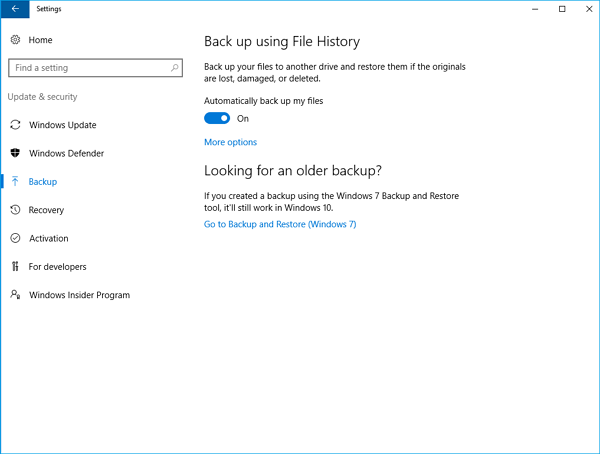
- #How to create image of hard drive windows 10 how to
- #How to create image of hard drive windows 10 install
- #How to create image of hard drive windows 10 upgrade
- #How to create image of hard drive windows 10 full
- #How to create image of hard drive windows 10 windows 10
Because of the nature of cloning, the newly installed drive should boot just as though nothing had been changed, and you'll find Windows exactly as you left it.
#How to create image of hard drive windows 10 install
If you're swapping out your hard drive for something bigger and faster and don't want to deal with an intermediary external drive, you can grab an inexpensive enclosure, pop your new drive into it, clone directly onto it, and install it in your PC. This cloned drive can be kept as a backup, or you can reverse clone from it to a new, blank drive. Unlike drive imaging, in which you create a compressed version of a drive that can be restored later, cloning creates an exact replica - boot records, files, settings and themes - that can be used immediately as a primary drive. Since imaging a drive can seemingly keep tidy records of your files and can be used to put Windows on a new drive, where does cloning come in? If you find that your computer has been infected with malware, for example, having a healthy image to restore to can make things quite easy when it comes to removing the virus. There doesn't need to be a complete failure, though, to benefit from an image backup.
#How to create image of hard drive windows 10 windows 10
Also, if you create a recovery environment on a separate USB stick or external hard drive, you can restore an image on a PC that doesn't have Windows 10 installed at all. In that case, you can choose your image (usually saved on an external drive) and restore your PC. If your Windows 10 PC suffers from a blue screen error and can't boot properly, you'll be confronted with a menu with an option to restore from a system image.

There are a few ways you can recover your computer using a drive image.
#How to create image of hard drive windows 10 full
Incremental images are sometimes preferred because they can be created quickly depending on how many changes have been made, whereas differential images can become quite large depending on how much time has gone by since a full image was created. Incremental images record any changes made since the last incremental image, so, in the case of a restoration, you need the full image and every incremental image created thereafter. Differential backups keep a record of any changes made since the full image was created, so restoring a system requires the full image and the latest differential image.

What's the difference between these types of image backups? A full image takes everything on the drive and is required to restore your system. This allows for multiple full, incremental, and differential backups to better keep your data safe. They both involve creating a backup of your hard drive, but there are significant differences that make them suitable for different situations.īecause of their compressed nature, multiple images can live on a single hard drive as long as there is space enough on the drive. Let's take a look at what exactly each process involves, and why you might want to use each technique.īefore you perform either process on your PC, it's good to know exactly what imaging and cloning are. But what about when you want to move your entire OS and your apps and your files to a new drive? That's where cloning and imaging come in. If you're swapping out a secondary drive, or one that doesn't contain your OS, you can technically just drag and drop the files you want to keep over to the new drive. Not only are SSDs faster, they're also more reliable because they don't have moving parts inside.
#How to create image of hard drive windows 10 upgrade
It also depends on the speed of the hard disk.īy following this guide, you created an easy to restore full-backup of your Windows PC in 6 steps.Solid-state drives (SSD) are becoming all the rage thanks to the significant speed upgrade they deliver over standard hard-disk drives (HDD). This depends on the amount of data that needs to be backed up. The backup wizard takes from 10 minutes to several hours. Step 6: Click " Start backup" to start the backup process. Step 5: Choose your hard drive and click Next. Step 4: Click on the button "Create a system image".

Step 3: Click on " System Image Backup" in the bottom left corner of the window. Step 2: In System and Security, click " Save backup copies of your files with File History". Step 1: Type 'Control Panel' in the search bar and then press. Taking a Full Backup of a Windows 10 PC on an External Hard Drive With this tutorial, you can create a complete backup image on Windows 10. The disadvantage is that you cannot use it to restore individual files. The main advantage of this feature is that it can be used to restore a complete system in case of a software or hardware failure.
#How to create image of hard drive windows 10 how to
I will show you in this guide how to do a backup to hard drive in Windows 10 using Windows's own tools, so there is no need for any additional software. We will use the Image Backup feature in Windows 10 to create a complete backup of your system, including the operating system, settings, applications, and your personal files.


 0 kommentar(er)
0 kommentar(er)
